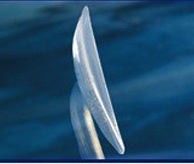The use of implants in aesthetic and reconstructive rhinoplasty is unavoidable in many cases. The term ‘implant’ can be interpreted several ways. Most commonly it is perceived as being composed of a synthetic material. The term ‘graft’ implies that it is a naturally harvested material. But both synthetic materials and bone and cartilage grafts can be lumped into the single category of implants.
The ideal properties of a rhinoplasty implant are well known and include biocompatibility, lack of an inflammatory response, non-resorbable, and of the desired aesthetic shape needed. Every type of nasal implant fulfills some of these criteria and none of them are absolutely ideal and fulfill all criteria. There is considerable controversy amongst plastic surgeons as to the best material with advocates divided along the lines of synthetic vs autogenous materials for use in rhinoplasty.

In their study, 15 patients had hard nasal implants and 13 patients had soft implants. In the first six months after surgery, no differences were observed in outcomes. All patients who received soft implants were aesthetically satisfied. Only two-thirds of the hard implant patients (10) were satisfied with the procedure. The reason for dissatisfaction were implant deviation, implant visibility and partial resorption of the implant. The study surgeons felt that, while both hard and soft implants could be equally placed, the soft implants offered improved malleability and moldability for dorsal augmentation. They concluded that soft implants were superior for dorsal nasal augmentation and had fewer complications and higher satisfaction rates.
There are many factors that go into a successful dorsal nasal augmentation. But some type of nasal implant material is needed to achieve it. I can think of over a dozen types of implant material methods and, in the right patient, they all can work. There is no question however that the use of diced cartilage is an extremely versatile method that offers extreme adaptability and can be molded the best of any material. But it is a method that requires a significant amount of cartilage and often a rib graft may be needed for larger dorsal augmentations. It is my preferred rhinoplasty method when adequate cartilage material can be obtained.
Dr. Barry Eppley
Indianapolis, Indiana


